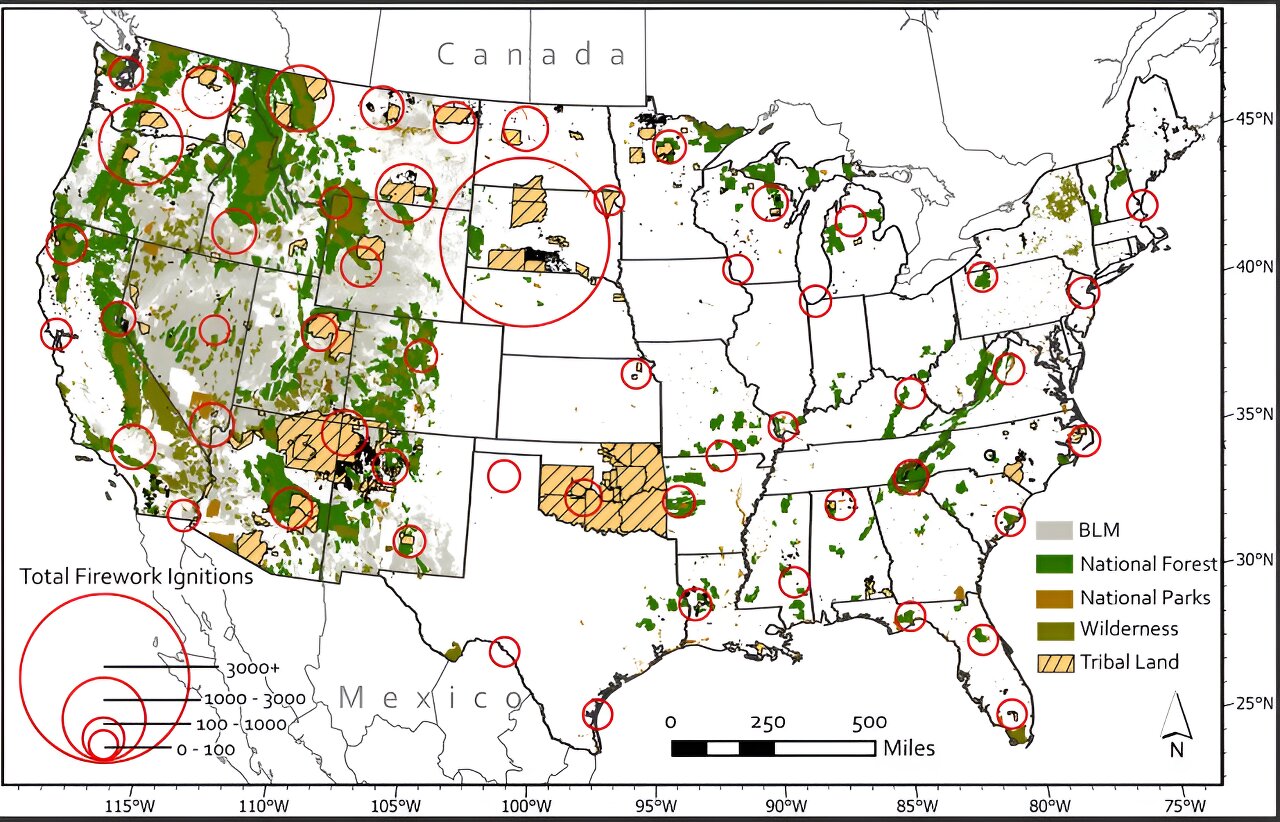
![Map depicting hotspots of fireworks-caused wildfire ignitions and how they correspond to land types. Mapped land types include areas managed by the Bureau of Land Management (BLM), National Forest, National Parks, Tribal Land, and Wilderness area. Select land use designations and boundaries were collected from the United States Geologic Survey Protected Areas Database 3.0 [28]. Tribal land boundaries were collected from the US Census Tigerline Shapefile database. Credit: PLOS ONE (2023). DOI: 10.1371/journal.pone.0291026 The timing of fireworks-caused wildfire ignitions during the 4th of July holiday season](https://skynews.icu/wp-content/uploads/2023/09/The-timing-of-fireworks-caused-wildfire-ignitions-during-the-Fourth-of.jpg)
Every year on the Fourth of July, fireworks cause cause a precipitous increase of wildfire ignitions in the United States (U.S.). This human-environmental phenomenon is noteworthy and highlights the impact of American culture on wildfire activity in the U.S.
In other regions of the world, research has increasingly shown that human culture impacts fire activity, with weekly cycles of fire activity reflecting the local structures of workweeks and the timing of religious days of rest (e.g., Saturdays and Sundays). Although Fourth of July peak in wildfire ignitions has been recognized in previous research, it has not been examined in much detail and the influence of the holiday’s weekly timing (e.g. if it falls on a Monday, Tuesday, etc.) has not been examined.
In a study published earlier this week in PLoS ONE, researchers dissected the Fourth of July peak in fireworks-caused wildfire ignitions in a federal database of wildfire ignitions. Their findings include:
- Although these fireworks-caused ignitions are broadly distributed across the U.S., they are concentrated on tribal lands and in the west and north central U.S.
- There tend to be more fireworks-caused ignitions in the week leading up to July 4, relative to the week after it.
- There tend to be more fireworks-caused ignitions the day after the July 4 (July 5), relative to the the day before it (July 3).
- When the Fourth of July falls on a weekend (e.g., Saturday, Sunday), there is a tendency to have fewer wildfire ignitions due to fireworks. Weekends and the timing of work holidays impact the weekly distribution of fireworks-caused ignitions.
“This study uncovers new dimensions of the Fourth of July peak in wildfire ignitions and highlights several important implications for policy and wildfire management,” said Richard Vachula, assistant professor in the Department of Geosciences at Auburn University. “Given the predictability of the fireworks-caused ignitions and rising costs of wildfire mitigation, these results have several important management and policy implications.”
More information:
Richard S. Vachula et al, The timing of fireworks-caused wildfire ignitions during the 4th of July holiday season, PLOS ONE (2023). DOI: 10.1371/journal.pone.0291026
Provided by
Auburn University College of Sciences and Mathematics
Citation:
The timing of fireworks-caused wildfire ignitions during the Fourth of July holiday season (2023, September 7)
retrieved 7 September 2023
from https://phys.org/news/2023-09-fireworks-caused-wildfire-ignitions-fourth-july.html
This document is subject to copyright. Apart from any fair dealing for the purpose of private study or research, no
part may be reproduced without the written permission. The content is provided for information purposes only.